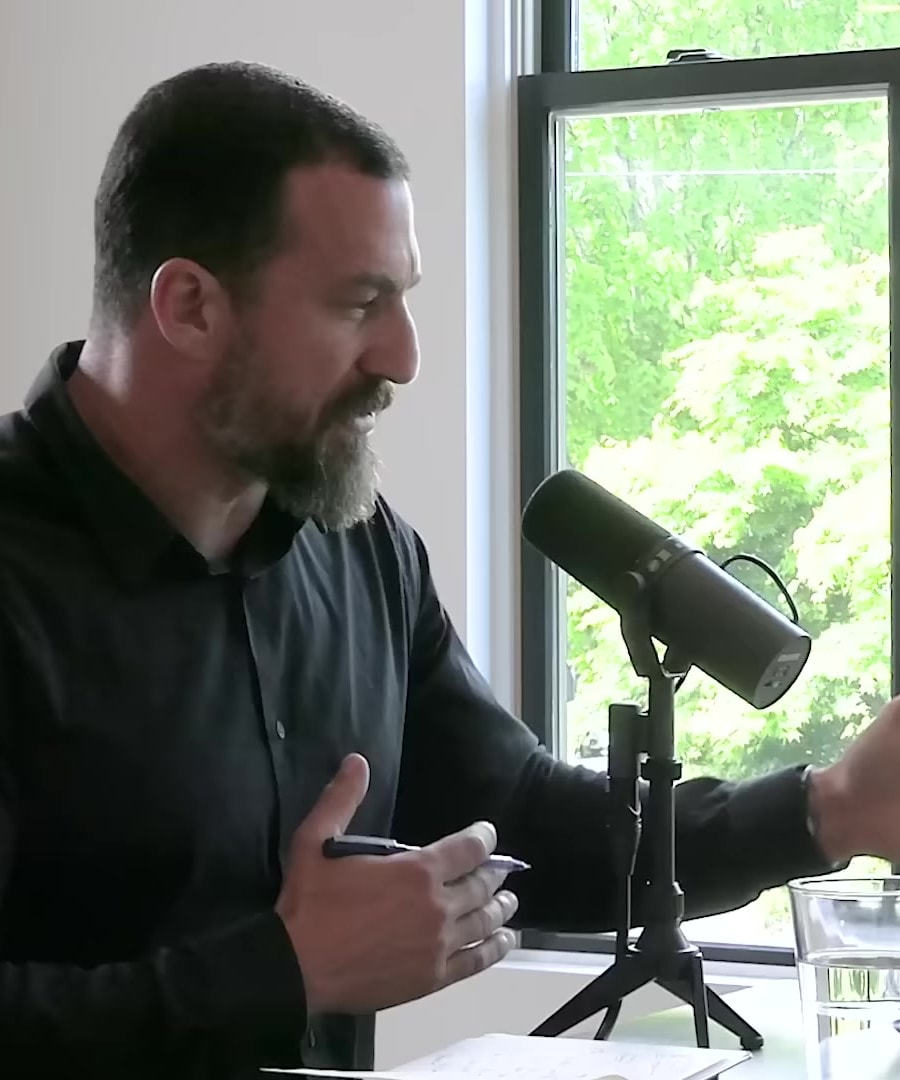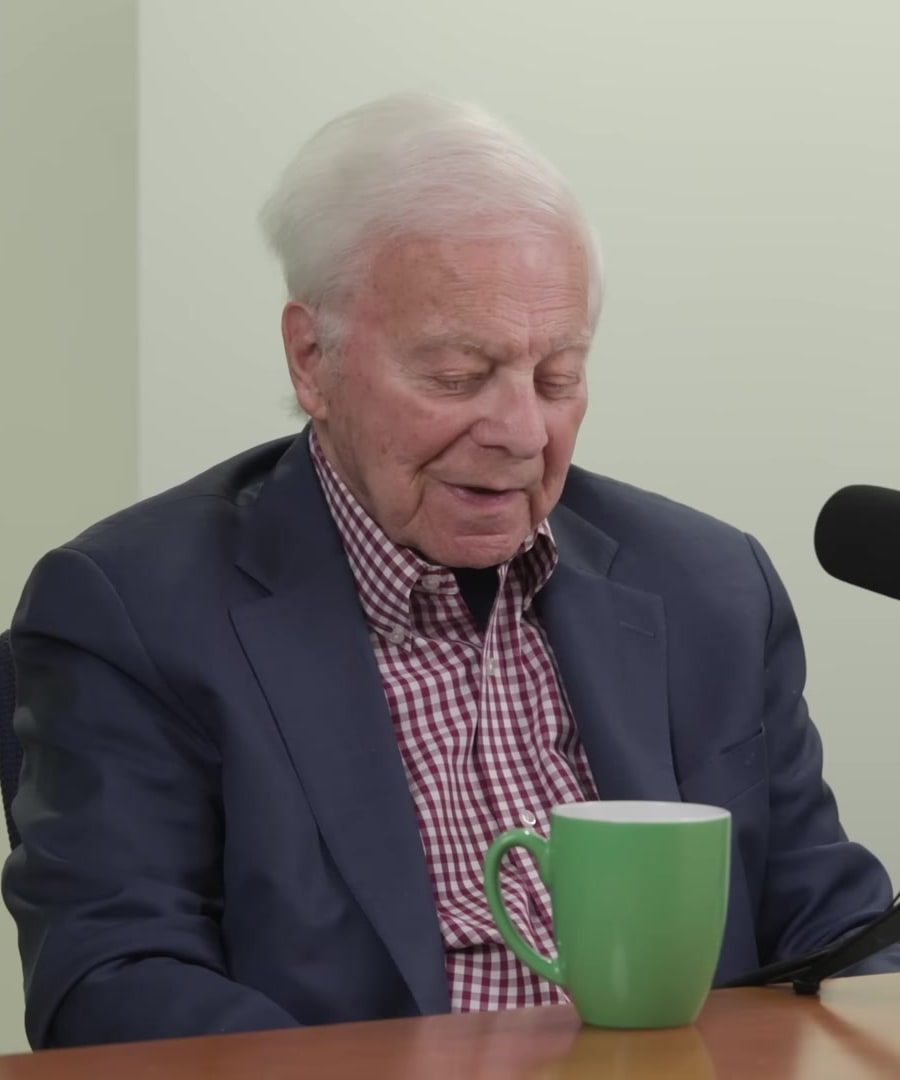Betrayal trauma
Sources:
Betrayal trauma, while not directly mentioned, relates closely to the concept of "repetition compulsion" discussed by Dr. Paul Conti. This psychological phenomenon involves the unconscious repetition of patterns, particularly in relationships, where individuals might find themselves repeatedly involved in similar abusive situations. Dr. Conti explains that traumatic experiences impact the limbic system, the emotional part of our brain, which doesn't recognize the passage of time. Trauma induces strong, lasting emotions and a sense of shame, which can make past experiences feel very immediate.
In this context, individuals are driven by their past traumas to unconsciously seek out similar situations in a misguided effort to "make things right." This attempt is supposed to heal the original trauma but often leads to further harm. The victim of betrayal trauma might repeatedly enter relationships that echo the dynamics of their initial betrayal, driven by deep-seated vulnerabilities and shame from their past trauma 1.
RELATED QUESTIONSWhat are some coping strategies for betrayalaping with betrayal trauma?
Sources:
Coping with betrayal trauma involves understanding the underlying mechanisms and employing effective strategies. Here are some coping strategies discussed on the Huberman Lab:
-
Confront the Trauma: Recognize the trauma without giving in to the repetition compulsion. This means acknowledging the pain without letting it drive behaviors that repeat the traumatic patterns 1.
-
Psychotherapy: Working with a skilled therapist can provide a structured and supportive environment to navigate and heal from betrayal trauma. This professional guidance is crucial as it offers a space to process complex emotions and thoughts 1.
-
Journaling: This is a valuable self-help tool. Writing about feelings and experiences can help in making sense of them and reducing the power they hold. Structuring journaling, such as daily reflections or writing during specific emotional peaks, can enhance its effectiveness 1.
-
Understanding Short-Term vs. Long-Term Coping: Recognize the difference between coping mechanisms that provide immediate, short-term relief (like avoidance or substance use) and those that contribute to long-term healing and resilience. The focus should be on strategies that support enduring change and personal growth 1.
-
Reframing the Story: Sharing one's story of betrayal can be therapeutic. It is crucial, however, to do this in a safe environment, potentially under the guidance of a therapist. This can help reframe the narrative from one of victimhood to one of survivorship and growth 2.
-
Embracing Challenges as Growth Opportunities: James Hollis suggests seeing life's challenges, like trauma, as opportunities for personal growth and responsibility. It involves identifying what these challenges prevent us from doing and what they compel us to confront 3.
Implementing these strategies requires careful consideration and often the assistance of professionals to ensure healthy progress and prevent further psychological distress.
RELATED QUESTIONS-
Techniques for emotional processing in betrayal trauma
The Huberman Lab podcast does not seem to have detailed specific techniques focused directly on the emotional processing of betrayal trauma. For such cases, general emotional processing approaches for trauma may still be relevant and helpful:
-
Mindfulness and Meditation: These practices can help manage emotional turmoil by fostering a state of awareness and presence. This allows individuals to observe their thoughts and feelings without judgment.
-
Controlled Exposure: Gradually confronting the emotions and memories associated with the betrayal can help diminish their intensity. This should be done under the guidance of a mental health professional to ensure it is conducted safely.
-
Cognitive Behavioral Techniques: These involve identifying and challenging the negative thoughts that arise from the betrayal and replacing them with more balanced and constructive thoughts.
-
Social Support: Engaging with a supportive community or group who understands the nature of the trauma can provide emotional comfort and advice.
-
Physical Exercise: Regular physical activity can help reduce stress and improve overall emotional well-being, which is crucial during emotional processing.
-
Creative Expression: Activities like art, music, or writing can serve as therapeutic outlets for the emotions experienced during the healing process.
Incorporating these techniques into a comprehensive approach to healing from betrayal trauma can be beneficial. However, individual needs vary, so it's recommended to consult mental health professionals for tailored guidance.
RELATED QUESTIONS-
Understanding the psychology behind betrayal trauma
Sources:
The psychology behind betrayal trauma is deeply influenced by the complex interplay of emotional responses and previous traumatic experiences. Here are key insights on this topic as discussed by Dr. Paul Conti on the Huberman Lab podcast:
-
Repetition Compulsion: Dr. Conti explores a phenomenon known as repetition compulsion, where individuals unconsciously seek out relationships or situations that replicate previous traumas. This is not a conscious choice but driven by an internal need to resolve past issues. Although it might appear as though the person is merely entering similar negative situations, the underlying motive is to hopefully navigate these situations differently and achieve a different outcome. This pattern is driven by an emotional part of the brain that does not process the passage of time and remains influenced by past traumas 1.
-
Impact of Shame and Guilt: Betrayal trauma often induces strong feelings of shame and guilt, which can alter a person's self-perception and affect how they interact with the world. Victims might believe they "deserve" the mistreatment, or they might feel that it was somehow precipitated by their actions. This distorted self-perception perpetuates the cycle of negative relationships 1.
-
Role of Therapy: Addressing betrayal trauma effectively often requires therapeutic interventions aimed at uncovering and dealing with the emotions and faulty cognitions rooted in the initial traumatic experiences. Therapy can help individuals to reframe their experiences, reducing the feelings of guilt and shame and diminishing the power that past traumas have over their current life. By working through these emotions, individuals can potentially change their patterns and find healthier relationships 2.
Understanding and intervening in the cyclical pattern of betrayal trauma involves recognizing the deep-seated emotional triggers and working through them comprehensively, typically with professional guidance.
-
Trauma recovery
Sources:
Recovery from trauma involves several approaches, focusing on both psychological intervention and physiological understanding. Here are key insights on trauma recovery:
-
Diminishing Physiological Responses: emphasizes the importance of recognizing and repeatedly confronting traumatic events to form new non-traumatic associations with those memories. This involves diminishing the physiological responses to the trauma, which is a crucial first step in recovery 1.
-
Relearning New Narratives: It’s essential for trauma survivors to create new, positive associations with the memories or triggers of their trauma. This can sometimes involve retelling the traumatic narrative to a clinician, which helps extinguish the old fear response and embed new, positive associations 1.
-
Behavioral Therapies: Therapies such as Prolonged Exposure therapy, Cognitive Processing, and Cognitive Behavioral Therapy have shown efficacy in treating trauma by using language to rewire the nervous system. These therapies help reduce fears and traumas by modifying how one responds to trauma-related memories 2.
-
EMDR and Ketamine Treatments: Treatments like Eye Movement Desensitization Reprocessing (EMDR) and ketamine treatment are mentioned as effective in treating traumatic memories. These approaches are often linked to mechanisms similar to those involved in REM sleep, suggesting their potential in altering trauma-related brain circuits 3.
Understanding and implementing these techniques can aid in the effective recovery from trauma, focusing heavily on altering both the psychological perception of traumatic events and the biological responses they trigger.
RELATED QUESTIONS-
Writing protocol
Sources:
The writing protocol discussed by is designed to help individuals process and recover from stressful or traumatic experiences. Here's a detailed breakdown of the protocol:
-
Purpose of the Protocol: This writing exercise is intended to help individuals confront and process traumatic memories through writing. It's based on the research by James Pennebaker and colleagues, showing long-term positive effects on mental and physical health 1.
-
Preparation: Before starting the writing, consider the intensity of the topic. It’s recommended to start with less traumatic events to gauge tolerance. Evaluate emotional readiness for recalling potentially distressful events in detail 1.
-
Guidelines for Writing:
- Content: Include facts about the experience, emotions felt during and currently, and any links or associations with the event that might arise during writing 2.
- Duration and Frequency: Write for 15-30 minutes in each session. The complete protocol involves four writing sessions, which can be done on consecutive days or spread over a month 3.
- Format: Continuous writing is recommended. Grammar and spelling are secondary to the emotional expression and processing of the event 3.
-
Post-Writing Considerations:
- Avoid sharing the writings casually, as they can evoke strong emotional responses from readers. If sharing is necessary, do so with a professional therapist 4.
- Prepare for emotional responses. It's normal to feel upset or disturbed immediately after writing. Planning a calm activity post-writing can help manage these feelings 5.
-
Potential Benefits: The protocol has been linked to improved mental health, reduced anxiety, and even physical health benefits, such as better immune function 6.
-
Cautions: Do not engage in this exercise right before sleep as it can be unsettling. If the experience is too distressing, it's advisable to stop and consider professional guidance 1.
This protocol is a powerful tool for healing but requires careful consideration and handling due to the sensitive nature of the topics involved.
-
Betrayal trauma
- RELATED QUESTIONS
What are some coping strategies for betrayalaping with betrayal trauma?
- RELATED QUESTIONS
Techniques for emotional processing in betrayal trauma
- RELATED QUESTIONS
Understanding the psychology behind betrayal trauma
Trauma recovery
- RELATED QUESTIONS
Writing protocol












